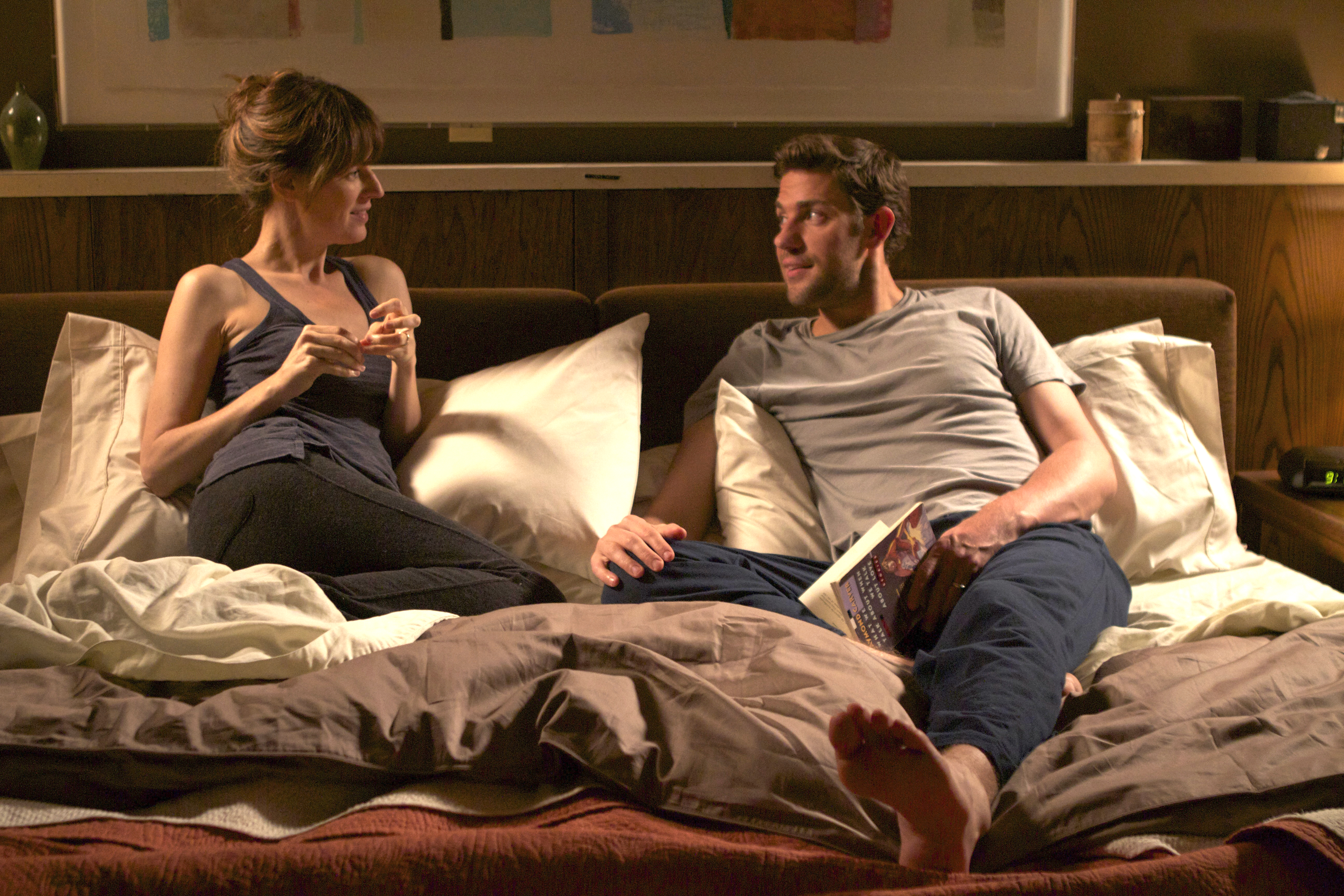“Nobody Walks” opens with Martine (Olivia Thirlby) romantically kissing a presumed lover. It’s only after she utters her first line, “It was nice sitting next to you on the flight,” that the audience realizes that this film will not be about typical romantic relationships.
“Nobody Walks” is an independent drama that chronicles the short visit of Martine, a New York artist who stays in the Los Angeles home of Peter (John Krasinski,”The Office”), a sound editor who is helping with her art project for a gallery. Martine’s presence and subsequent relationships with Peter and his assistant David (Rhys Wakefield) begin to disrupt everyone surrounding her. From Peter’s wife Julie (Rosemarie Dewitt), to their teenage daughter Kolt (India Ennenga), who is infatuated with David, all the characters are suddenly forced to re-evaluate their relationships with each other now that Martine is in the picture.
Martine, the assumed protagonist of the film, is a somewhat flat character. Since the audience never understands her motives for indulging in sexual relationships, the film never really culminates into anything inspired or thought-provoking. Martine’s naivete and promiscuous behavior prove to be a bad combination. Thirlby often plays her as a victim, with glassy eyes and dumbfounded expressions that give the impression that she will burst into tears at any given moment.
“Nobody Walks” is somewhat reminiscent of “Crazy Stupid Love” or “The Kids are All Right” in that it aims to capture the spirited, if dysfunctional, dynamics of family members that only manage to coexist happily on a superficial level, until one person upsets the balance. Where those movies succeed and this movie fails, however, is in the likeability of the characters. The script never develops these characters, and as a result they just seem to be making mistakes and not growing from them, or recognizing their own faults.
Julie, a psychiatrist, notices Peter’s interest in Martine, and suddenly allows herself to play along with one of her patients, who constantly expresses sexual interest in her during therapy sessions. But the patient, played by “Weeds” star Justin Kirk, isn’t even given a name, so why should the audience care about their relationship at all?
John Krasinski, playing a character that is a far cry from Jim of “The Office,” handles this dramatic material surprisingly well, and does the best he can to channel a man who is morally conflicted by his own desires. However, since the film clocks in at just under 83 minutes, it never gives any of the actors enough time to truly flesh out their characters. Instead, writer-director Ry Russo-Young seems to draw a parallel between the art film Martine is making, and the film itself. The movie takes a lot of time showing the audience the art piece, which is essentially two ants crawling around to different sound effects. Sadly, the connection between this work and the film itself isn’t really made clear.
Peter at one point explains Martine’s art project being about the individual versus the collective, and if Martine is supposed to be the individual struggling to find her place in this collective family, she seems to fail because she’s not supposed to be a part of it. Unfortunately, Russo-Young doesn’t give anyone in the film, or those watching the film, a chance to walk away with a changed perspective on these ideas or the characters that might be embodying them.
““ Michael Palumbo
Email Palumbo at mpalumbo@media.ucla.edu.
